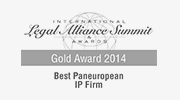15 March 2023
In order to gain insight into the present and future of metaverse innovation and to try to foresee what could be the prospects in this technological field and the importance of getting ahead with industrial protection, this article makes a brief analysis of some of the published and most representative patent applications with respect to metaverse technologies. We address issues such as: How Patent Offices deal with metaverse patent applications, and what applications have been developed based on metaverse patents arising since the end of 2021 when the metaverse became “hype”.
Can the metaverse be patented?
Faced with this obvious question, the first answer would be that, generally speaking, if a technical solution to a technical problem is provided, then the solution is patentable. In particular, in the metaverse, patent applications could be filed both for new hardware systems/devices that enable the virtual and/or augmented experiences offered by the metaverse and for software procedures and their relationship with that hardware, provided that they meet the usual requirements for any patent registration. This is summarized very well by the European Commission in Episode 3 of its “Intellectual Property in the Metaverse” Series, which over five installments, published during 2022, analyzes the different avenues of industrial and intellectual protection that can be considered for innovations in the metaverse.
When considering filing patents for innovations based on technologies that support the metaverse concept (blockchain, web3, IoT, Artificial Intelligence, 3D techniques, digital twins, virtual reality, augmented reality), it is important to keep in mind this chain of basic questions:
- Is the invention an abstract idea? An invention that is simply an abstract idea, such as a method for organizing human activity, classifying people according to profiles, performing an economic practice, falls outside the subject matter of a patent.
- Is the invention “significantly more” than an abstract idea? For example, a specific application of technology (blockchain, AI, VR,…) that solves a technical problem in a new and non-obvious way can be considered “significantly more” than an abstract idea.
- Is the invention linked to a specific practical application? An abstract idea is not transformed into a patentable technical solution simply by implementing it on a computer or through the use of a technology. Therefore, it is important to describe how the invention relates to that specific practical application.
- Is the invention linked to specific hardware or software? For the same reason, it is important to describe how the invention relates to specific hardware or software.
Some examples of patents in the metaverse
Since Facebook’s rebranding to Meta propelled the notion of the metaverse into the media, patent applications for metaverse-related technologies have been on even more increasing rise, even though they had already been in the patent portfolios of large global companies such as Facebook/Meta itself, Microsoft, Apple, Sony or Nike, to name a few, for more than a decade.
Some more popular examples are now world-renowned “CryptoKick” sneakers from Nike, which use blockchain technology to connect a real-world sneaker, and their digital representation to be worn by the buyer’s avatar in the virtual world (Figure 1),

Figure 1.- “System and method for providing cryptographically secured digital assets” EP3891680A1, US10505726B1, by Nike Inc.
and the virtual reality gloves for accurately measuring the movement of parts of a single finger and hand (Figure 2) patented by Apple

Figure 2.- “IMU (inertial measurement unit)-Based Gloves”, CN109582125B, US10877557B2, from Apple Inc.
which takes a step further, contemplating the measurement of finger movements without the need for gloves to interact with 3D environments (Figure 3) reminding us of how the protagonists of “The Peripheral,” the Amazon Prime Video series, connect in a future world of mixed reality that combines VR (virtual reality) with AR (augmented reality).

Figure 3.- “Devices, Methods, and Graphical User Interfaces for Interacting with Three-Dimensional Environments”, EP4034970A1, US11340756B2 from Apple Inc.
The countries of the “metaverse league”…
The reality is also reflected in the avalanche of patents playing in “the league of the metaverse”: they are granted in the United States, in China, but in Europe a grant is more unlikely and we will also see why…
The metaverse scene cannot stay only in the United States and Europe, because according to a recent report (February, 2023), China currently occupies much of the metaverse horizon with the second place in the race to apply for patents relating to technologies that support immersive experiences.
A patent application by Alibaba, the Chinese e-commerce giant that also owns a virtual reality platform called Zhilio and the “Ali Metaverse” and “Taobao Metaverse” protometavers, was one of the most popular highlighting how patents and technological innovation in the metaverse can be used as a competitive advantage. Alibaba has the most blockchain-based patent applications to its credit. As early as May 2021, Alibaba unveiled Ayayi, an AI-powered character with an incredible resemblance to humans, from facial expressions to body movement, and in December of the same year, Alibaba created its own “XR lab” (XR: extended reality, an industry term that brings together products related to virtual reality VR and augmented reality AR) and launched new AR glasses for virtual meetings with a Zoom-like app called DingTalk. But Alibaba is not alone (cf., The top 10 metaverse companies in China – The China Project).
And they all recognize that the US is one of the few territories where software patenting is more feasible in practice, while Europe is much stricter in assessing whether a computer-implemented method has a “real” technical effect beyond the “potential” technical effects of an executable program on processing media and may hold back solutions related to simulations in digital environments.
The challenge of metaverse patents
Protecting software inventions for the metaverse is a challenge in patent offices that exclude software from patentability as ineligible subject matter… and the European Patent Officeis not the only one. To overcome these exclusions, in addition to satisfying the novelty and inventive step requirements required of any patent, the key is to demonstrate that a software-based invention involves an additional element beyond the software itself.
In the U.S., this requires a demonstration that the invention provides “something more” than an abstract concept. In Europe, the claimed technical features (or non-technical software features by their interaction with technical features) must provide a technical solution to a technical problem. Therefore, for successful patent prosecution, it is useful to specify in the application the specific technical effects of the invention that achieve the beneficial result. For example, a specific technical component in an underlying device that acts in a specific way as a result of the software invention could be identified to contribute to the beneficial technical effect.
To assess the patentability of a software solution specifically related to the metaverse, a first question that should be analyzed would be whether it is possible to distinguish a process performed in the metaverse from the same process performed outside the metaverse.
Currently, for the metaverse, a similar approach is taken for software inventions based on traditional computing. That is, a process of implementing a mental act in a computing environment without modifications to account for the computational execution of the act is unlikely to be considered inventive. Therefore, for software-based procedural inventions referring to applications in the metaverse, it will be essential to identify and describe in detail the steps of the procedure that are unique to executing the application in the metaverse, particularizing the technical problem that the procedure is intended to overcome by bringing it into the metaverse.
When it comes to metaverse-related inventions that are hardware systems or devices, in principle, the matter is relatively simpler. Devices such as extended reality kits, haptic clothing, sensors, programmable electronic components can easily be accepted as a technical object. The obstacle sometimes encountered by such hardware inventions is that there is a high number of patents for technologies whose application to the metaverse is obvious and, in fact, much of the hardware with applications for the metaverse has already been under development for a long time. Therefore, distinguishing the subject matter of a new patent application from existing devices (to meet the novelty and inventive step requirements) will often involve focusing on implementation details to solve a problem in a particular metaverse application, because even seemingly subtle advances can lead to an invention being patentable. Highlighting such advances in a patent application by identifying the key inventive features and describing the technical improvements they provide can increase the chances of a patent being granted.
Examples of problems solved by new metaverse hardware are: reducing the weight and bulk of VR/AR/XR kits to enable their use for longer periods of time; integrating those kits with other user devices or providing them with additional functionality that replaces those other devices; providing means in the kits that prevent motion sickness or other problems that are found to be experienced by metaverse users; improving the arrangement of sensors in the physical input and feedback devices, for better detection of user gestures or to provide the user with a greater sensory field when experiencing a metaverse experience.
For example, at the last Consumer Electronics Show (CES), held in January 2023, including touch and smell in immersive experiences became the big news in the metaverse. Therefore, despite the high density of patents on hardware inventions related to the metaverse, the rapid advances in technology, as well as the constantly evolving nature of the metaverse itself, means that commercially valuable protection is possible in this sector.
Patents in the metaverse… on the rise
In order to give a quick overview of how the explosion brought by the commercial vision of the metaverse is deriving in countless patent applications within this field, the following figures capture some representative examples, apart from those already shown at the beginning referring to VR/AR/MR/XR devices and gaming platforms:
– Components of a metaverse platform, for connecting a real entity with a representation thereof in the metaverse and its digital twins and, more specifically, for the autonomous vehicles sector (WO2020229841A1):

Components of a metaverse system for creating Non-Fungible Digital Twins (NFDT) of objects, in particular, digital objects or assets that change or have properties that change (e.g., carbon emissions) over time (WO2022225464A1):

Components of a shopping platform in the metaverse, (WO2018081235A1):

Components of a platform for metaverse tour (US1099696915B2):

Components of a platform for holding business meetings in the metaverse (US10979672B1):

Components of a platform for training factory workers in the metaverse (US11372474B2):

The role of Artificial Intelligence in the metaverse… and for patents
The examples demonstrate that artificial intelligence (AI) plays a key role in realizing the technological advances necessary for further development of the metaverse. Solutions to problems such as improving accessibility and security, managing hardware and software infrastructure more effectively, improving intelligent processing of user input, and providing a more personalized user experience are all amenable to innovation with AI-based technology.
In general, there has been a huge trend towards using AI as a means to develop inventions, with varying degrees of human involvement in the process. However, with respect to the ownership of a patent right, the case law of most patent offices has already established that a machine learning system or algorithm cannot be named as an inventor.
The Courts have been united in their conclusion that having such a system named as an inventor would not meet the statutory requirement that an inventor be a “natural person.”
In practice, these decisions do not mean that inventions created with AI are not patentable, but simply that it is necessary to name at least one natural person as the inventor, the person who has put in place the steps to enable or provide the technical problem to be solved by the computer system and that produces the results. Including these details in the patent application can make it clear that the novel and inventive aspects of an invention are attributable to a human inventor using AI as a tool for developing the inventions, rather than the AI system itself being the inventor.
On the other hand, most AI applications are based on open source code and, although it is possible to patent an invention that is based in part on open source code, the invention must be described in the patent application clearly focused on the steps that are novel and not obvious to an AI expert in solving the target technical problem, including how the “datasets” are built or used to train or test the AI models, the generation of results and concrete examples of use.
All this without losing sight of what the examples shown here prove as a simple reflection of the reality of this boom: patent applications are rarely found at the European Patent Office because few come to fruition due to the requirements discussed above, but the picture may improve.
Progress towards the eventual arrival of the metaverse is largely driven by technological advances that enable people to interact more effectively with a virtual world and/or with augmented reality developed over the real world and the combination of both worlds.
In this field, there is significant room for innovation and, as already advanced in a previous article, safeguarding innovation by converting it into patents is now and always an essential business strategy to stay at the forefront of technological disruption.
It is possible to obtain patent protection on both hardware and software inventions related to the metaverse.
Especially by early consideration of the potential challenges associated with securing patent protection in this sector, individuals and companies can act now to forge protection in Europe and other territories that will ultimately prove commercially valuable in the metaverse space. And one must always consider that, even if the patent is not granted somewhere, its publication can always be a deterrent to third parties and be valued in a negotiation. In order to give a better assessment in each case and to solve any doubt, our patent team has specialists in the field of metaverse and artificial intelligence.
Contact us through our e-mail: metaverso@herrero.es and visit the metaverse section of our website for more information.




























Comentarios
No Comments